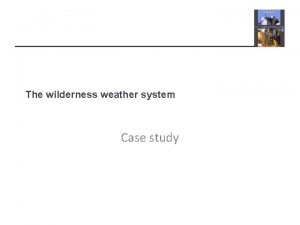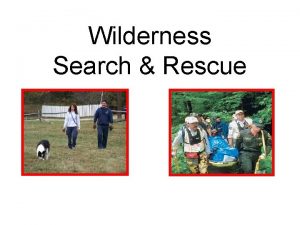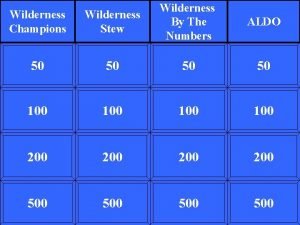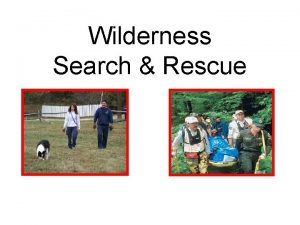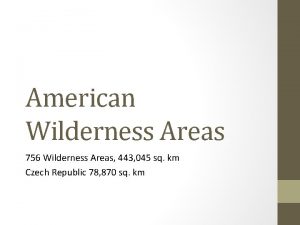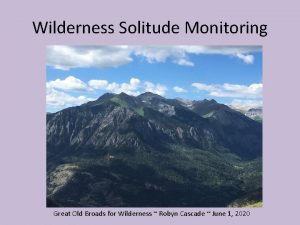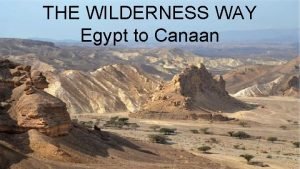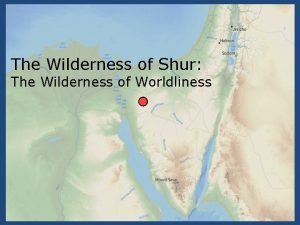The wilderness weather system Case study Weather information









- Slides: 9

The wilderness weather system Case study

Weather information ² A national weather service wishes to collect weather information from remote areas to help with weather forecasting, forecast accuracy assessment and climate change modeling. ² Currently, limited collections are made manually by people visiting remote stations every day. § This is expensive and time consuming § Some areas have no coverage because of difficulties of access (no road, heavy snowfall, etc. ) ² The intention therefore is to develop remote automatic collection systems that are connected to a broader weather information system.

Overall system organization WS 1 Satellite information WS 2 WS 3 WS. . Weather information system Weather data archive WSn Weather radar information

System context for the weather station

Weather station characteristics ² Must be self-contained and completely autonomous § § Integral power supplies and power generation Satellite communications Ruggedized to tolerate extreme weather Self-testing ² May exist in several version for different types of deployment • Highland areas based on wind power • Desert areas based on solar power ² Remote control to support autonomous operation ² Dynamic software re-configuration

Installed instruments ² Anemometer – wind speed measurement ² Barometer – air pressure measurement ² Ground air thermometers ² Rain/precipitation gauge ² Sunshine gauge ² Visibility gauge

Essential system functionality ² Collect weather information from instruments at regular intervals ² Transmit this information, on request, to the weather information system over the satellite link ² Store information if communications are not available ² Monitor external conditions and shut down power generation/instruments if threat of damage from extreme weather ² Run regular diagnostic tests to assess overall health of system

Software architecture

System software ² Embedded software but not real-time in the sense that rapid reaction to events is required. ² Developed using an object-oriented approach ² OO approach associates objects with the physical entities in the system e. g. § Weather data collection instruments § Power supply and generation § Communications ² Data may be stored as objects ² No requirement for large-scale database
 Wilderness weather station
Wilderness weather station Wilderness weather station case study
Wilderness weather station case study Management information system case study
Management information system case study Management information system case study
Management information system case study Information system case study
Information system case study Information system in e commerce case study
Information system in e commerce case study Management information system case study banking
Management information system case study banking Best worst and average case
Best worst and average case Fbi virtual case file case study
Fbi virtual case file case study Key technology trends that raise ethical issues
Key technology trends that raise ethical issues
